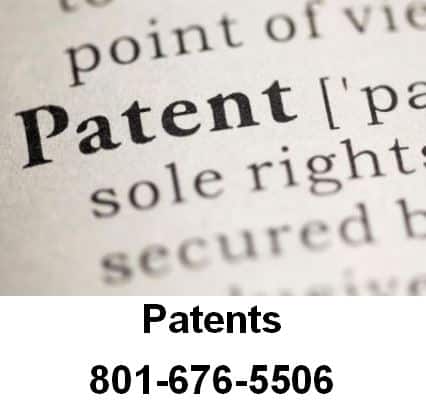
To patent an invention, an applicant must complete and file a patent application with the U.S. Patent and Trademark Office (USPTO). The USPTO examines applications, and administers and keeps a record patents and trademarks it has issued.
Before filing for a patent, the applicant should conduct a preliminary patent search to determine whether “prior art” — similar developments related to the invention — will disqualify the claim. Because patent applications are complex, the assistance of a patent attorney may be necessary.
Non-provisional patent applications include the following documents:The specification is a full, clear, concise, and exact written description of the invention and the process of creating and using it. The description should enable a skilled person in the field of the invention to make and use the invention without the need to conduct extensive experimentation. A specification should not be vague or keep certain aspects of the invention a secret. If the invention improves upon an existing invention, the specification should only describe the specific improvement to the invention, unless a certain aspect of the previous invention relates to the improvement.
The specification section includes the following parts:Title of the Invention: The title of the invention should be short, specific, and accurate. Background of the Invention: This section should include a description of the field in which the invention is part of and references to prior inventions and any problems with the other inventions. Brief Summary of the Invention: This summary should include a descriptive overview of the invention, advantages of the invention, and a description of how the invention solves a previous problem.
Brief Description of the Several Views of the Drawing: This section should list the figures by number and should include a very brief description of each. Common terms used to describe the view of the drawing include perspective, sectional, cut-away, detail, exploded, and elevation.
Detailed Description of the Invention: The detailed description should be concise and complete, and should describe how to use and distinguish it from other inventions. The “best mode” of how to create the invention must be part of the description. A description of each of the drawings is also included in this section.
The claim or claims section identifies the scope of protection the patent will receive. Ultimately, the claim or claims will define a patent holder’s right to exclude others from using, making, or selling the item. Therefore, the wording in the claim or claims should be distinct and clear enough to define the extent of protection.
Remember You Need Patent Drawings
An application must include drawings if they are necessary to explain the invention. Drawings will provide a detailed understanding of the invention and must illustrate each feature of the invention as specified in the claims. The failure to include drawings may result in an incomplete application.
The USPTO allows applicants to file applications by mail or electronically.
For mail-in applications: All documents should be typewritten or produced by a mechanical printer in permanent black ink on one side of the paper. The applicant should make copies of each page of the application. If requesting a receipt, a self-addressed postcard should detail every page submitted and should include the name of the invention, the inventor’s name, and the filing date. The application should include a Fee Transmittal Form and the applicable filing fee.
The USPTO also allows applicants to submit documents online through the EFS-Web. Applicants, therefore, can submit an application from anywhere an Internet connection is available. Prior to submission, the applicant must convert the documents into standard PDF format. Upon completion, the system generates an electronic receipt.
After the USPTO receives a patent application, an examiner will evaluate the application. The examiner will determine whether the invention is patentable and whether the application uses the proper format and language. In most cases, a patent application is not approved based on its initial filings. More commonly, the patent examiner and the applicant will engage in written and verbal communication about the scope of the patent. If the examiner rejects the patent application, the applicant can amend and resubmit the application. A final rejection, however, will limit the applicants reply. The process takes between one to three years.
Free Consultation with an IP Lawyer
If you are here, you probably have an IP issue you need help with, call Ascent Law for your free intellectual property law consultation (801) 676-5506. We want to help you.
8833 S. Redwood Road, Suite C
West Jordan, Utah
84088 United States
Telephone: (801) 676-5506
Recent Posts
Basics of Adoption and Same Sex Couples

